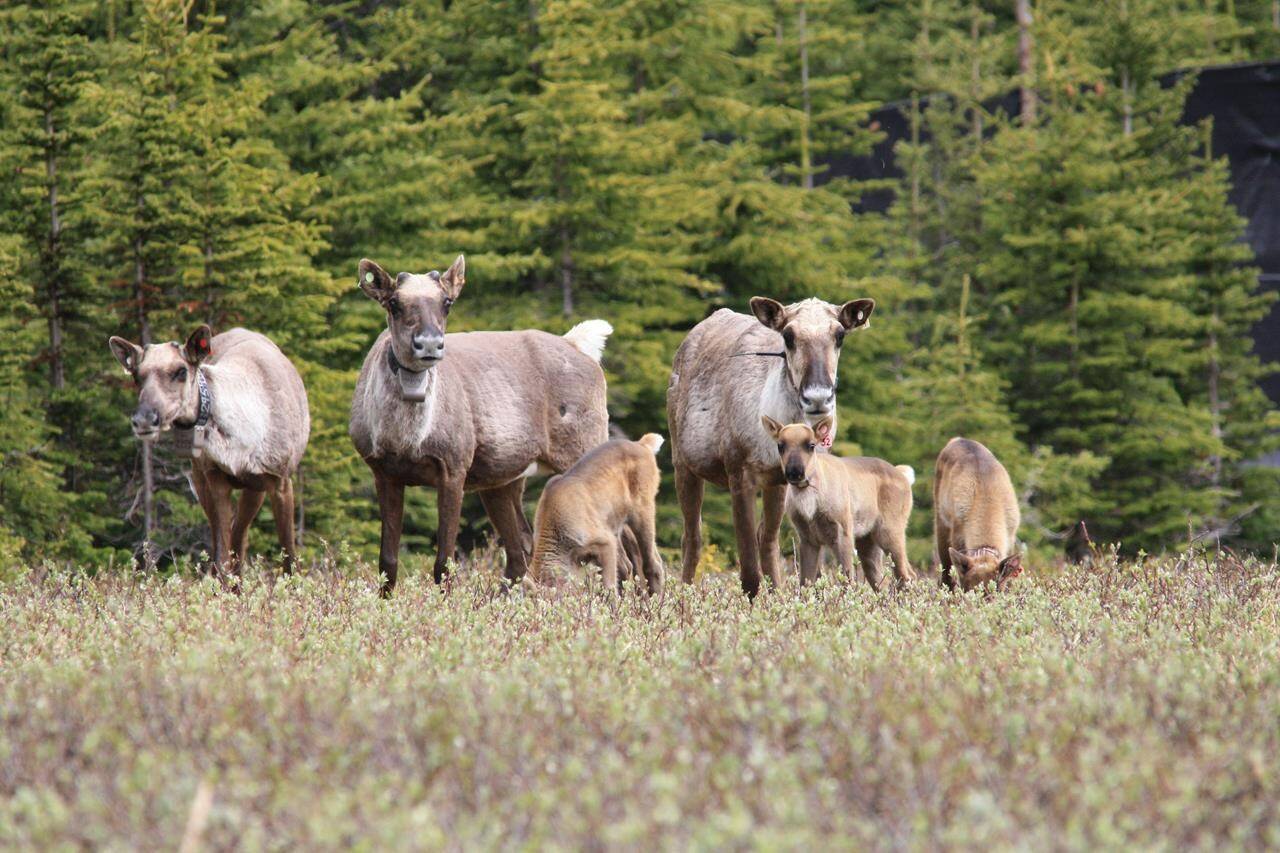Fresh research suggests western Canada’s once-dwindling caribou numbers are finally growing.
But the same paper concludes the biggest reason for the rebound is the slaughter of hundreds of wolves, a policy that will likely have to go on for decades.
“If we don’t shoot wolves, given the state of the habitat that industry and government have allowed, we will lose caribou,” said Clayton Lamb, one of 34 co-authors of a newly published study in the journal Ecological Applications.
“It’s not the wolves’ fault.”
Caribou conservation is considered one of the toughest wildlife management problems on the continent.
The animals, printed on the back of the Canadian quarter since 1937, require undisturbed stretches of hard-to-reach old-growth boreal forest. Those same forests tend to be logged or drilled, creating roads and cutlines that invite in deer and moose — along with the wolves that eat anything with hooves.
Between 1991 and 2023, caribou populations dropped by half. More than a third of the herds disappeared.
Governments, scientists and First Nations have been trying for years to find ways to bring them back. Lamb and his colleagues looked at 40 herds in British Columbia and Alberta to see if anything has worked.
The paper suggests caribou numbers have risen by 52 per cent since about 2020 compared with what they would have occurred if nothing had been done. There are now 4,500 in the two provinces, about 1,500 more than there would have been.
“There could be some actual good news,” Lamb said. “It was surprising, in a good way.”
The ranges of some herds are nearly 90 per cent disturbed by industry, and habitat restoration is the preferred solution. But it takes decades for a clear-cut or a cutline to return to anything like old-growth status, so various stopgaps have been used.
Because different measures were used on different herds, the researchers could link population trends to interventions.
Wolf sterilization didn’t work because it couldn’t be done on enough of the predators.
Same with reducing the moose and deer populations that draw wolves into caribou habitat. Nearly all those populations would have to be killed, an unpopular move in rural and First Nations communities where hunting is both a pastime and necessity.
“Moose reduction is incredibly controversial,” said Lamb.
Moving animals from large herds to small helped only for a season or two.
What worked was killing wolves.
“Wolf reductions alone increased the growth rate of southern mountain caribou subpopulations by (about) 11 per cent,” the report states.
That growth rate increased when wolf culls were combined with other measures such as feeding and penning and protecting pregnant cows.
“Wolf reduction was the only recovery action that consistently increased population growth when applied in isolation,” says the report. “Combinations of wolf reductions with maternal penning or supplemental feeding provided rapid growth.”
The finding puts wildlife managers in a tough spot, Lamb said.
“Shooting wolves to save another species is an incredibly difficult decision.”
In 2020 and 2021, Alberta culled 824 wolves.
Some caribou ranges have been protected. In B.C., an agreement between the province and a First Nation has conserved 8,000 square kilometres — an area bigger than Banff National Park.
Alberta has protected some habitat, but undisturbed ranges continue to shrink under forestry and energy industry pressure.
A recent study found human disturbance increased in 23 out of 28 Alberta caribou subranges between 2018 and 2021. Development permits were approved for 700 square kilometres of caribou range.
Until those trends reverse, heavy-handed tactics such as wolf culls will be the price of caribou herds, said Lamb.
“Every year we delay in getting trees growing, that’s one more year of having to implement these interventions. I think we’re talking about many years of supporting caribou.”
READ ALSO: Province seeks caribou revival
READ ALSO: Wolf cull deemed inhumane after B.C. government releases ‘disturbing’ photos

